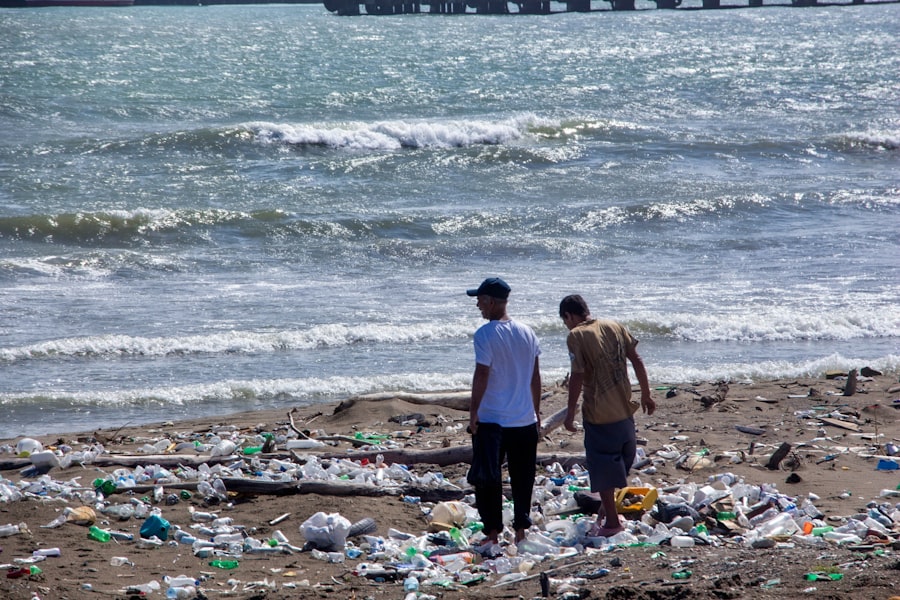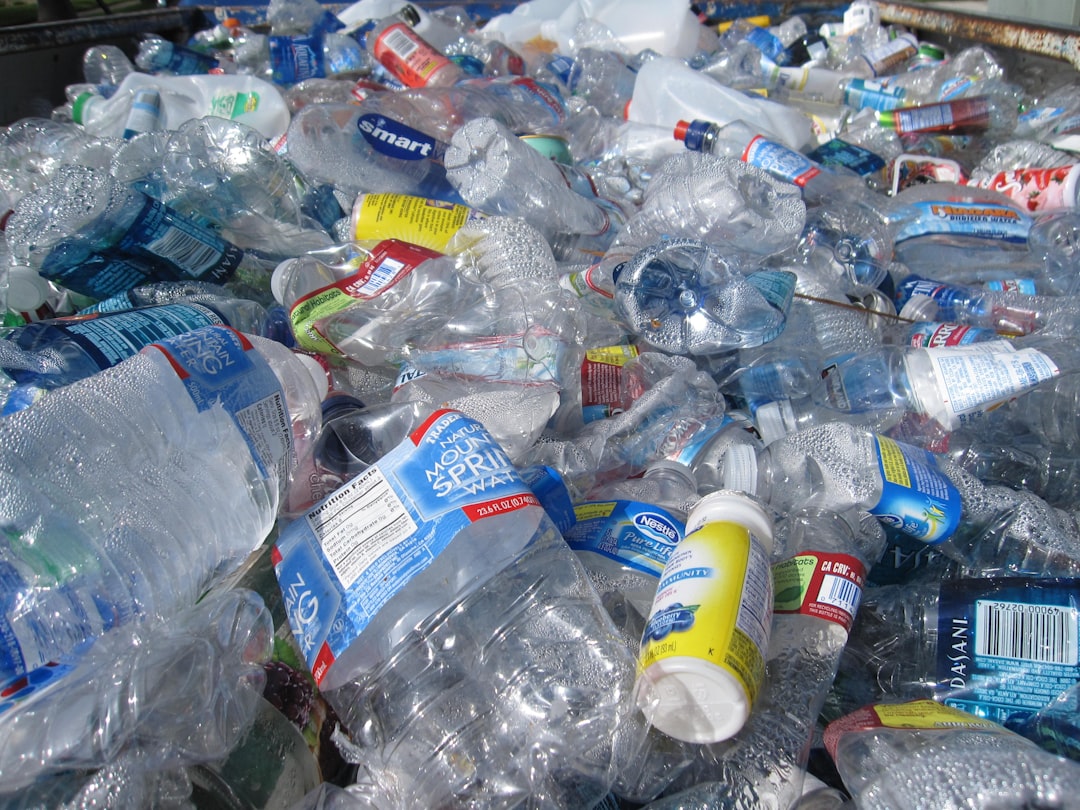The environmental ramifications of single-use plastic are profound and far-reaching. Each year, millions of tons of plastic waste are generated, much of which ends up in landfills, oceans, and other natural habitats. This accumulation not only disrupts the aesthetic beauty of landscapes but also poses significant threats to biodiversity.
The durability of plastic means that it can take hundreds of years to decompose, leading to long-term pollution that affects soil and water quality. As plastic breaks down into microplastics, these tiny particles infiltrate ecosystems, making their way into the food chain and ultimately affecting human health. Moreover, the production of single-use plastics contributes to environmental degradation through the extraction of fossil fuels, which are used as raw materials.
This process not only depletes natural resources but also releases greenhouse gases that exacerbate climate change. The extraction and processing of these materials often lead to habitat destruction and increased carbon emissions, further compounding the environmental crisis. As communities grapple with the consequences of plastic pollution, the need for sustainable alternatives becomes increasingly urgent.
Key Takeaways
- Single-use plastics cause significant environmental damage and harm wildlife and ecosystems.
- They pose health risks due to chemical exposure and pollution.
- The economic burden includes cleanup costs and impacts on industries like tourism and fishing.
- Recycling and disposal of single-use plastics face major challenges, leading to increased waste.
- Reducing consumption requires combined efforts from governments, corporations, and consumers, alongside viable alternatives.
The Health Consequences of Single-Use Plastic
The health implications associated with single-use plastics are alarming and warrant serious consideration. Many single-use plastic products contain harmful chemicals, such as bisphenol A (BPA) and phthalates, which can leach into food and beverages. These substances have been linked to various health issues, including hormonal disruptions, reproductive problems, and even certain types of cancer.
As individuals consume products packaged in single-use plastics, they may unknowingly expose themselves to these toxic compounds, raising concerns about long-term health effects. In addition to chemical exposure, the prevalence of single-use plastics contributes to broader public health challenges. The improper disposal of plastic waste can lead to unsanitary conditions in communities, fostering environments conducive to disease transmission.
For instance, plastic debris can accumulate in urban areas, creating breeding grounds for pests and pathogens. Furthermore, the environmental degradation caused by plastic pollution can compromise water quality and food safety, posing additional risks to human health. As awareness grows about these health consequences, the urgency for change becomes increasingly apparent.
The Economic Costs of Single-Use Plastic

The economic implications of single-use plastics extend beyond their initial low cost. While these products may appear inexpensive at the point of sale, their long-term economic burden is significant. The costs associated with waste management, environmental cleanup, and public health interventions can quickly accumulate.
Municipalities often face increased expenses related to litter cleanup and recycling efforts, diverting funds from other essential services. This financial strain can be particularly challenging for smaller communities with limited budgets. Moreover, the economic impact of single-use plastics is felt across various sectors.
The tourism industry, for example, suffers when natural landscapes are marred by plastic waste, deterring visitors and harming local economies. Additionally, industries reliant on clean environments, such as fishing and agriculture, may experience declines in productivity due to pollution and ecosystem degradation. As businesses and governments grapple with these economic challenges, the need for sustainable practices becomes increasingly clear.
The Impact on Wildlife and Ecosystems
| Metric | Description | Impact on Wildlife | Impact on Ecosystems | Example |
|---|---|---|---|---|
| Habitat Loss (hectares/year) | Area of natural habitat destroyed annually | Reduction in species population and diversity | Disruption of ecological balance and nutrient cycles | Deforestation in the Amazon rainforest |
| Species Extinction Rate (species/year) | Number of species becoming extinct annually | Loss of biodiversity and genetic resources | Collapse of food webs and ecosystem services | Amphibian declines worldwide |
| Pollution Levels (ppm or mg/L) | Concentration of pollutants in air, water, or soil | Health issues and mortality in wildlife | Degradation of habitat quality and ecosystem function | Oil spills affecting marine life |
| Invasive Species Spread (km²/year) | Area colonized by non-native species annually | Competition and displacement of native species | Alteration of ecosystem structure and processes | Zebra mussels in North American lakes |
| Climate Change Effects (°C increase) | Average temperature rise affecting habitats | Shifts in species distribution and breeding cycles | Changes in ecosystem productivity and resilience | Coral bleaching in the Great Barrier Reef |
The impact of single-use plastics on wildlife and ecosystems is devastating and multifaceted. Marine animals are particularly vulnerable to plastic pollution; they often mistake plastic debris for food, leading to ingestion that can cause injury or death. Sea turtles, for instance, are known to consume plastic bags that resemble jellyfish, resulting in blockages in their digestive systems.
Birds also face similar threats as they feed on plastic particles, which can lead to malnutrition or starvation. Beyond individual species, the broader implications for ecosystems are equally concerning. Plastic pollution disrupts habitats and alters food webs, leading to imbalances that can have cascading effects on biodiversity.
Coral reefs, which are already under threat from climate change, are further compromised by plastic debris that can smother corals or introduce harmful pathogens. As ecosystems struggle to adapt to these pressures, the loss of biodiversity threatens the resilience of natural systems and the services they provide to humanity.
The Carbon Footprint of Single-Use Plastic
The carbon footprint associated with single-use plastics is a critical aspect of the broader climate crisis. The entire lifecycle of plastic—from extraction and production to disposal—contributes significantly to greenhouse gas emissions. The manufacturing process alone is energy-intensive, relying heavily on fossil fuels that release carbon dioxide into the atmosphere.
As global demand for plastic continues to rise, so too does its carbon footprint, exacerbating climate change. Furthermore, the disposal methods commonly employed for single-use plastics often result in additional emissions. Incineration releases carbon dioxide and other pollutants into the air, while landfilling can produce methane—a potent greenhouse gas—during decomposition.
As communities seek solutions to mitigate climate change, addressing the carbon footprint of single-use plastics becomes an essential component of any comprehensive strategy aimed at reducing emissions and promoting sustainability.
The Disposal and Recycling Challenges of Single-Use Plastic

The challenges associated with the disposal and recycling of single-use plastics are complex and multifaceted. While recycling is often touted as a solution to plastic waste, the reality is that many types of single-use plastics are not recyclable or are difficult to process due to contamination. This leads to a significant portion of plastic waste ending up in landfills or incinerators rather than being repurposed into new products.
Moreover, the global recycling infrastructure is often inadequate to handle the sheer volume of plastic waste generated each year. Many countries lack the facilities or technology necessary to effectively recycle plastics, resulting in a reliance on exporting waste to other nations—often with dire environmental consequences. As communities strive for more sustainable waste management practices, addressing these recycling challenges is crucial for reducing the overall impact of single-use plastics on the environment.
The Social and Cultural Implications of Single-Use Plastic
The prevalence of single-use plastics has far-reaching social and cultural implications that extend beyond environmental concerns. In many societies, convenience has become a driving force behind consumer behavior, leading to a culture that prioritizes disposable products over sustainable alternatives. This shift has not only altered consumption patterns but has also influenced social norms surrounding waste and environmental responsibility.
Additionally, the reliance on single-use plastics can exacerbate social inequalities. Low-income communities often bear the brunt of plastic pollution due to inadequate waste management systems and limited access to clean environments. As these communities grapple with the consequences of plastic waste—such as health issues and diminished quality of life—the need for equitable solutions becomes increasingly urgent.
Addressing the social dimensions of plastic consumption is essential for fostering a more sustainable future that benefits all members of society.
The Alternatives to Single-Use Plastic
As awareness grows about the detrimental effects of single-use plastics, a variety of alternatives have emerged that offer more sustainable options for consumers and businesses alike. Reusable products—such as stainless steel water bottles, cloth shopping bags, and glass containers—provide practical solutions that reduce reliance on disposable items. These alternatives not only minimize waste but also encourage a shift in consumer behavior towards more mindful consumption practices.
Biodegradable materials represent another promising avenue for reducing single-use plastic consumption. Innovations in plant-based plastics and compostable packaging offer environmentally friendly options that can break down more easily in natural environments. However, it is essential for consumers to remain informed about the limitations and proper disposal methods for these materials to ensure they achieve their intended environmental benefits.
By embracing these alternatives, individuals can play a pivotal role in reducing the demand for single-use plastics.
The Role of Government and Policy in Addressing Single-Use Plastic
Government action plays a crucial role in addressing the challenges posed by single-use plastics. Policymakers have the power to implement regulations that limit the production and distribution of disposable plastics while promoting sustainable alternatives. Initiatives such as bans on certain single-use items—like plastic straws or bags—have gained traction in various regions as communities seek to reduce plastic waste.
In addition to bans, governments can incentivize businesses to adopt more sustainable practices through grants or tax breaks for companies that prioritize eco-friendly materials or implement recycling programs. Public awareness campaigns can also educate citizens about the importance of reducing single-use plastic consumption and encourage community engagement in sustainability efforts. By taking decisive action at the policy level, governments can drive meaningful change in reducing plastic pollution.
The Responsibility of Corporations and Consumers
Both corporations and consumers share responsibility in addressing the issue of single-use plastics. Businesses play a pivotal role in shaping consumer choices through their product offerings and marketing strategies. By prioritizing sustainable practices—such as using eco-friendly materials or implementing take-back programs—companies can significantly reduce their environmental impact while appealing to an increasingly eco-conscious consumer base.
On the other hand, consumers hold power through their purchasing decisions. By choosing reusable products or supporting brands committed to sustainability, individuals can drive demand for alternatives to single-use plastics. Additionally, grassroots movements advocating for reduced plastic consumption can influence corporate practices and push for systemic change within industries.
Ultimately, collaboration between corporations and consumers is essential for fostering a culture that values sustainability over convenience.
The Importance of Reducing Single-Use Plastic Consumption
Reducing single-use plastic consumption is not merely an environmental imperative; it is a necessity for safeguarding public health, promoting economic stability, and preserving biodiversity for future generations. As awareness grows about the multifaceted impacts of plastic pollution—from its effects on ecosystems to its contributions to climate change—the urgency for collective action becomes increasingly clear. By prioritizing sustainable alternatives and advocating for systemic change at both individual and institutional levels, society can work towards a future where single-use plastics are no longer a dominant force in daily life.
Embracing this challenge requires commitment from all sectors—governments, corporations, communities, and individuals alike—to create a more sustainable world that values both people and the planet over convenience and disposability.
The rising concern over the environmental impact of single-use plastics has prompted many to seek alternatives and solutions. A related article that delves into the economic implications of single-use plastics can be found at Hey Did You Know This. This resource provides valuable insights into the costs associated with plastic waste and the potential benefits of reducing our reliance on these materials.
WATCH THIS! The $400 Billion Water Lie: Why Bottled Water Is a Scam
FAQs
What is single-use plastic?
Single-use plastic refers to plastic products that are designed to be used once and then discarded. Common examples include plastic bags, straws, cutlery, bottles, and packaging materials.
Why is single-use plastic considered costly?
The cost of single-use plastic is not only financial but also environmental and social. Financially, it involves production, disposal, and cleanup expenses. Environmentally, it contributes to pollution, harms wildlife, and takes hundreds of years to decompose. Socially, it affects public health and local economies dependent on clean environments.
How much does single-use plastic contribute to pollution?
Single-use plastics make up a significant portion of plastic waste globally. It is estimated that around 50% of the plastic produced each year is single-use, much of which ends up in landfills, oceans, and natural habitats, contributing heavily to pollution.
What are the economic impacts of single-use plastic waste?
The economic impacts include costs related to waste management, environmental cleanup, loss of tourism revenue in polluted areas, and damage to fisheries and marine industries. These costs can run into billions of dollars annually worldwide.
Are there alternatives to single-use plastics?
Yes, alternatives include reusable materials such as cloth bags, metal or glass containers, biodegradable packaging, and compostable utensils. Many businesses and consumers are shifting towards these options to reduce plastic waste.
What measures are being taken to reduce the cost of single-use plastics?
Governments and organizations are implementing bans, taxes, and regulations on single-use plastics. Public awareness campaigns, recycling programs, and innovations in sustainable materials also aim to reduce reliance on single-use plastics.
How long does single-use plastic take to decompose?
Single-use plastics can take anywhere from 100 to 1,000 years to decompose, depending on the type of plastic and environmental conditions, leading to long-term environmental pollution.
What is the impact of single-use plastic on marine life?
Single-use plastics often end up in oceans, where they can be ingested by marine animals or cause entanglement. This leads to injury, death, and disruption of marine ecosystems.
Can recycling single-use plastics solve the problem?
Recycling helps reduce waste but is not a complete solution. Many single-use plastics are difficult to recycle due to contamination or material type, and global recycling rates remain low. Reducing use and switching to alternatives are also necessary.
How can individuals reduce the cost of single-use plastics?
Individuals can reduce costs by using reusable bags, bottles, and containers, avoiding products with excessive plastic packaging, supporting plastic-free initiatives, and properly disposing of plastic waste to aid recycling efforts.
